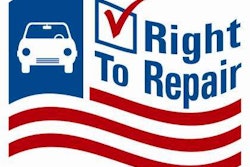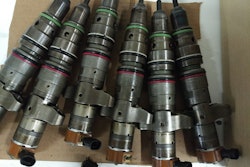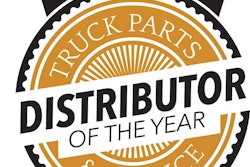Deep down, we knew it wouldn’t be seamless.
I think in 2015, when the associations of the independent aftermarket and the Truck and Engine Manufacturers Association (EMA) signed a national Memorandum of Understanding (MOU) regarding access to medium- and heavy-duty truck repair information, many in the industry were so excited by the agreement they didn’t give proper thought to what it would take to make the deal a reality.
I know I didn’t.
Which isn’t to say I thought OEMs would sign on the dotted line one day and hand over their technical information the next morning. I knew it would take time to pull together their information, determine what they had agreed to make available and then create online portals for the aftermarket to access and purchase that information.
I expected a year. Maybe 18 months. The Jan. 1, 2018, deadline set in the MOU for manufacturers to provide access to their diagnostic and repair information seemed unnecessarily long. Would it really take two and a half years?
Clearly, I was mistaken. Now 40 months removed from the MOU’s signing, members of the independent aftermarket say they remain unable to access all of the repair information promised by the OEM community. Some manufacturers have provided more information than others and, in some cases, aftermarket service providers are able to complete repairs without encountering any information accessibility issues.
But for most of the independent service provider community, the medium- and heavy-duty Right to Repair MOU hasn’t been very helpful.
In chatting via email recently with Total Truck Parts President Marc Karon — who chaired the Commercial Vehicle Right to Repair Coalition that represented the independent aftermarket during the MOU discussions and remains involved in the industry’s dialogue with the EMA — I learned the OEM community has provided the independent aftermarket about as much information as it is willing to give.
If the aftermarket wants more, it’s going to have to fight for it.
“Repair information and diagnostic information are different,” he says. “The OEMs have done a good job providing diagnostic information. This enables the technician to be able to determine what is wrong with the truck. It is the repair information that enables the technician to complete the repair and return the vehicle to service that has not been provided to a great extent by the OEMs.”
That’s where the aftermarket needs to step up, he says. The MOU stipulates independent service providers file formal complaints called Service Information Requests (SIR) with the National Automotive Safety Task Force (NASTF) to resolve agreement discrepancies and, to this point, Karon says service shops aren’t doing that.
“Without these formal complaints being reported to NASTF our hands are tied with respect to seeking any further negotiations,” he says.
This is frustrating because I know there are service providers out there dealing with access issues. You might be one of them. I’m having these conversations monthly. Every independent shop owner seems to have at least one anecdote about driving a truck X number of miles to a dealer for two minutes of service because the independent couldn’t reset an ECM after a repair. It’s happening throughout the market and the aftermarket is just accepting it.
That should not happen. The MOU was supposed to help level the playing field between dealers and independent service providers. I still think it can. But it needs to be followed. The aftermarket needs to stand up for itself.
To file a SIR, please go to www.nastf.org/filesir/.










